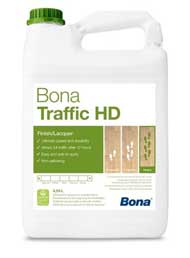Back to Maintenance & Care
Pets and Wood Floor Damage
Pets and wood floors can be a challenging combination. Dog and cat nails can easily scratch wooden surfaces, while shedding hair and occasional "accidents" further add to the potential damage. So, how do you protect your beloved floors from your furry companions? Regular nail trimming is essential to minimise scratching, as scratches can penetrate the protective coating of the floor, leading to long-term damage. Additionally, spills from food and water bowls can pose a threat if not promptly cleaned up. Consider placing food and water bowls in areas with non-wood flooring or use mats to contain spills. Walk-off mats near doors can also help prevent messes from entering your home. Let's explore some effective strategies to safeguard your wood floors from pet-related wear and tear.
Which Floors Are the Most Pet-Friendly?
Choosing the right flooring for a home with pets is crucial to minimise damage and maintain a clean and safe environment. While hardwood flooring may not always be the best option due to its susceptibility to scratches and damage, there are alternative flooring types that are more pet-friendly.
Hardwood flooring, although aesthetically pleasing, may not be the most practical choice for pet owners. Engineered floors have limited sanding capabilities, making them less ideal for homes with pets. While solid wood floors can be refinished more frequently, the effectiveness of refinishing depends on various factors, including manufacturer recommendations and the severity of damage.
However, hardwood is not the only option available. Vinyl flooring offers exceptional durability, affordability, and resistance to dirt and water. With proper care, vinyl floors can last well over 20 years and often come with warranties of at least 15 years. While vinyl may not add significant value to your property upon resale and can be challenging to remove once installed, it remains a top choice for pet owners due to its resilience against scratches and spills.
Water Damage Protection
 Installing hardwood floors in areas unsuitable for them, such as bathrooms, can lead to water damage issues. To mitigate this risk, it's essential to take proactive measures to protect your floors.
Installing hardwood floors in areas unsuitable for them, such as bathrooms, can lead to water damage issues. To mitigate this risk, it's essential to take proactive measures to protect your floors.
- Wipe Any Spills Immediately: Promptly clean up any water spills to prevent them from seeping into the wood and causing damage. Timely action can help minimise the risk of water penetration and staining.
- Use Water-Free Cleaning Products: Opt for water-free cleaning products to remove stains without introducing additional moisture to your floors. Avoid using wet mops and instead opt for damp ones to prevent over-saturation of the wood.
- Floor Surface Protection: Place mats and rugs in high-traffic areas to provide an additional layer of protection against dirt and moisture. Consider applying waterproof sealants to further safeguard your floors, although reapplication may be necessary every 12 to 18 months.
- Consider Waxing: Waxing your wood floors can provide added water protection and enhance their shine. However, keep in mind that once applied, wax cannot be recoated, and refinishing requires sanding to remove the existing coating. Despite this drawback, waxing can be a viable solution for preserving the beauty and longevity of your floors.